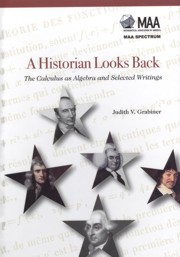Book contents
- Frontmatter
- Contents
- Introduction
- Part I The Calculus as Algebra
- Preface to the Garland Edition
- Acknowledgements
- Introduction
- 1 The Development of Lagrange's Ideas on the Calculus: 1754–1797
- 2 The Algebraic Background of the Theory of Analytic Functions
- 3 The Contents of the Fonctions Analytiques
- 4 From Proof-Technique to Definition: The Pre-History of Delta-Epsilon Methods
- Conclusion
- Appendix
- Bibliography
- Part II Selected Writings
- Index
- About the Author
1 - The Development of Lagrange's Ideas on the Calculus: 1754–1797
from Part I - The Calculus as Algebra
- Frontmatter
- Contents
- Introduction
- Part I The Calculus as Algebra
- Preface to the Garland Edition
- Acknowledgements
- Introduction
- 1 The Development of Lagrange's Ideas on the Calculus: 1754–1797
- 2 The Algebraic Background of the Theory of Analytic Functions
- 3 The Contents of the Fonctions Analytiques
- 4 From Proof-Technique to Definition: The Pre-History of Delta-Epsilon Methods
- Conclusion
- Appendix
- Bibliography
- Part II Selected Writings
- Index
- About the Author
Summary
General Sketch of the Development of Lagrange's Ideas
The evolution of Lagrange's ideas on the calculus can be traced through his writings from 1754—the year of his first paper—to 1797, when he published the first edition of FA. It is not generally appreciated how much Lagrange's views on the calculus changed throughout his career. In particular, the point of view of his brief early writings has usually—and, in my view, mistakenly—been identified with the conclusions of his more mature thought.
Lagrange's early work on the calculus (1754–1761) presented investigations of formal relationships which hold between derivatives, differentials, and integrals, but these were not intended to give a formalistic or algebraic foundation for the calculus. It is nevertheless often considered that Lagrange's foundation for the calculus was formalistic, partly because of the formal nature of this early work. Also, his most enthusiastic disciples stressed the formalistic aspects of FA and of the Taylor series definition of the derivative.
Yet Lagrange, in 1760, accepted as rigorous the Newtonian doctrine of first and last ratios. His later rejection of these, and of limits and fluxions, in favor of his “algebraic” method was preceded by a period of dissatisfaction with all the received bases for the calculus. I have found no evidence that he ever held that infinitesimals were rigorous, though he did grant that they could be of heuristic value once the rules for operating with them had been rigorously justified.
In 1772, he briefly suggested identifying the task of finding the differential quotient of f (x) with that of finding the coefficient of i in the power series development of f (x + i).
- Type
- Chapter
- Information
- A Historian Looks BackThe Calculus as Algebra and Selected Writings, pp. 17 - 36Publisher: Mathematical Association of AmericaPrint publication year: 2010



